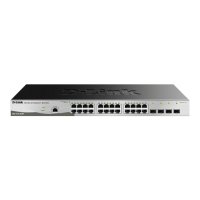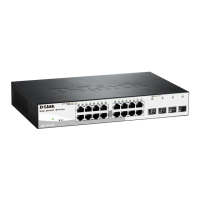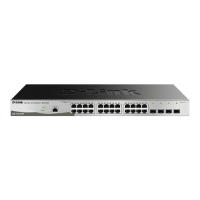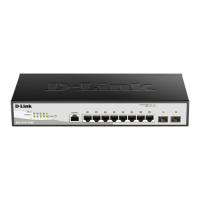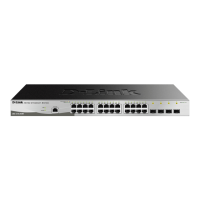Click Apply to create a new SNMP host, Delete to remove an existing host.
SNMP > SNMP > SNMP Engine ID
The Engine ID is a unique identifier used to identify the SNMPv3 engine on the Switch.
Input the Engine ID then click Apply to apply the changes and click Default resets to default value.
Figure 4.122 – SNMP > SNMP > SNMP Engine ID
SNMP > RMON > RMON Global Settings
Users can enable and disable remote monitoring (RMON) status for the SNMP function on the Switch. In
addition, RMON Rising and Falling Alarm Traps can be enabled and disabled. Click Apply to make effects.
Figure 4.123 - SNMP > RMON > RMON Global Settings
SNMP > RMON > RMON Statistics
The RMON Statistics Configuration page displays the information of RMON Ethernet Statistics and allows
the user to configure the settings.
Figure 4.124 - SNMP > RMON > RMON Ethernet Statistics Configuration
The RMON Ethernet Statistics Configuration contains the following fields:
Index (1 - 65535): Indicates the RMON Ethernet Statistics entry number.
Port: Specifies the port from which the RMON information was taken.
Owner: Displays the RMON station or user that requested the RMON information.
Click Add to make the configurations take effects and click Refresh to redisplay the table information.
SNMP > RMON > RMON History
The RMON History Control Configuration page contains information about samples of data taken from ports.
For example, the samples may include interface definitions or polling periods.
Figure 4.125 - SNMP > RMON > RMON History Control Settings

